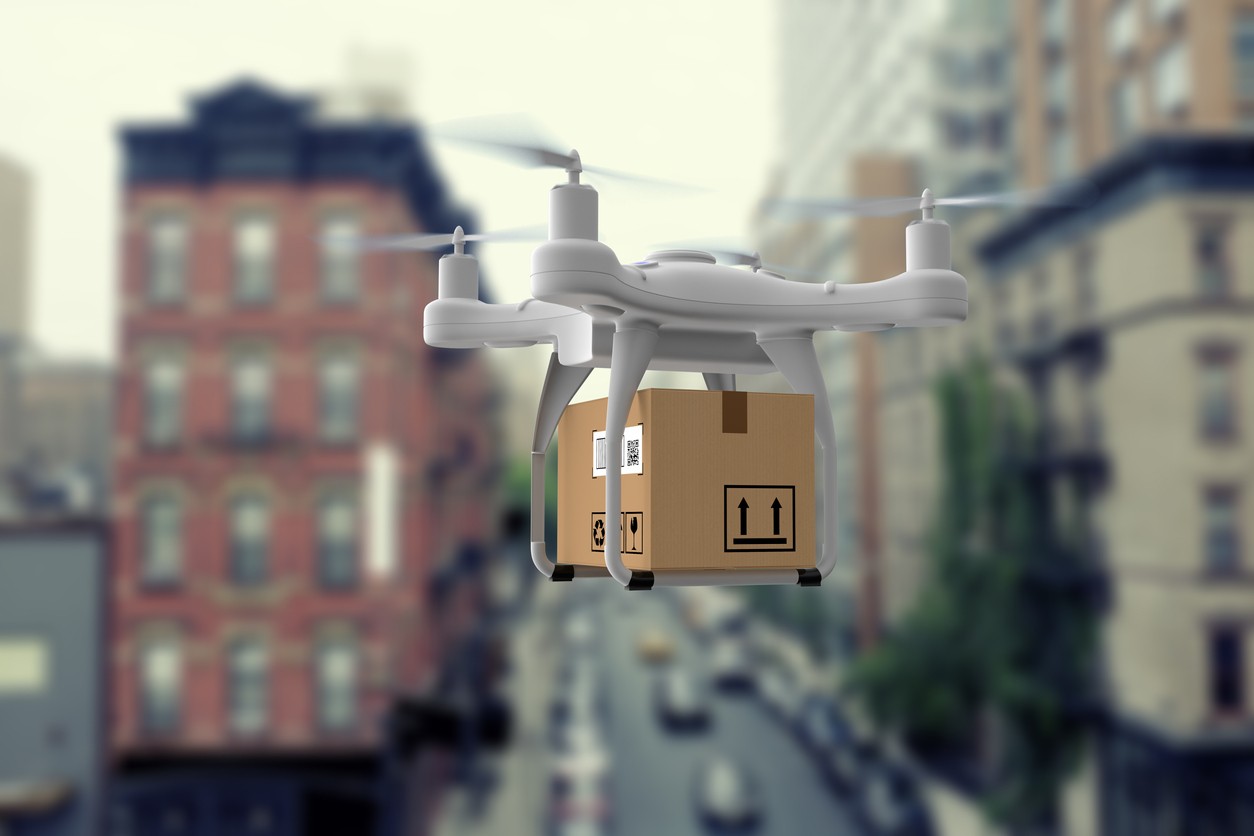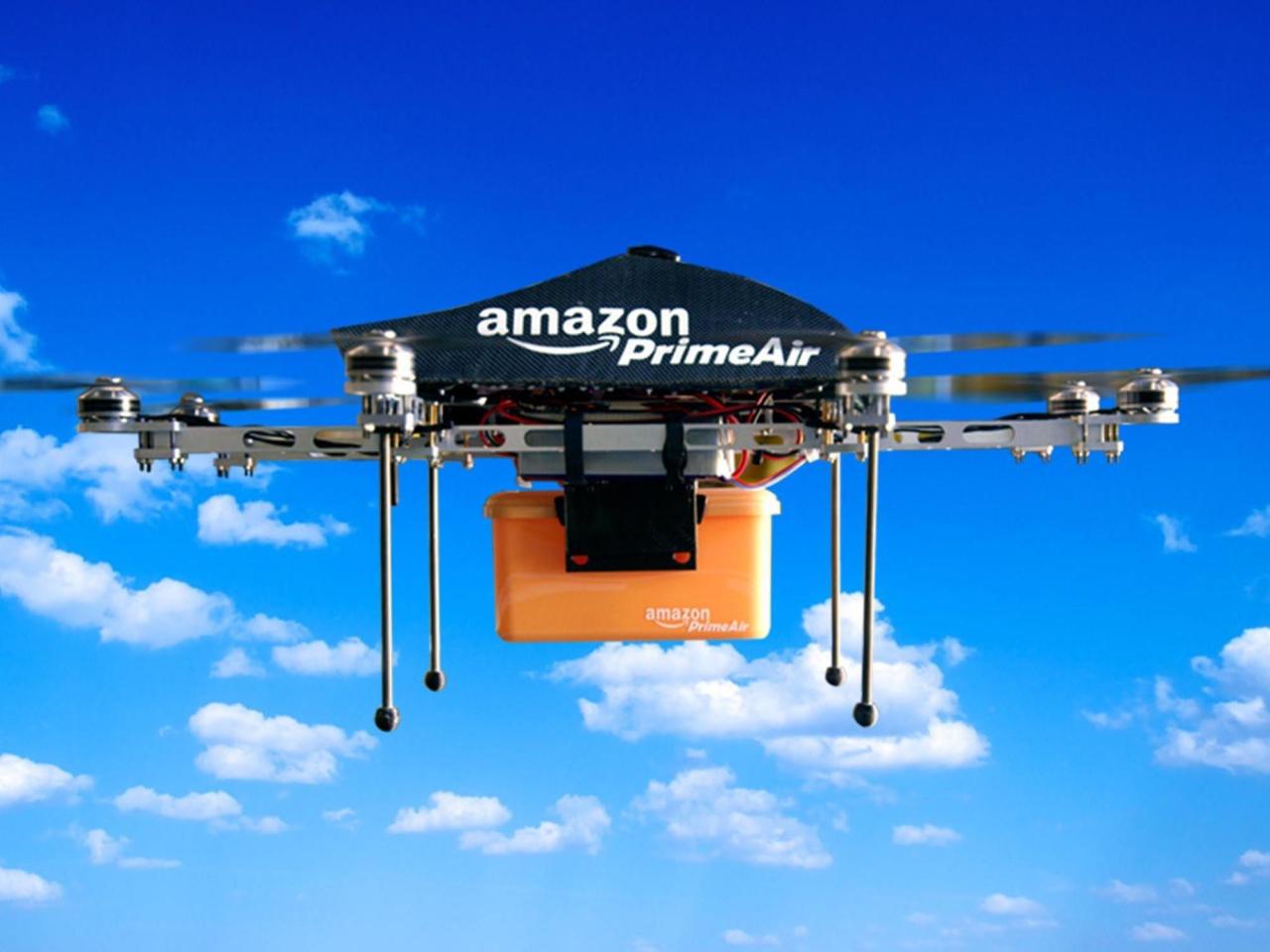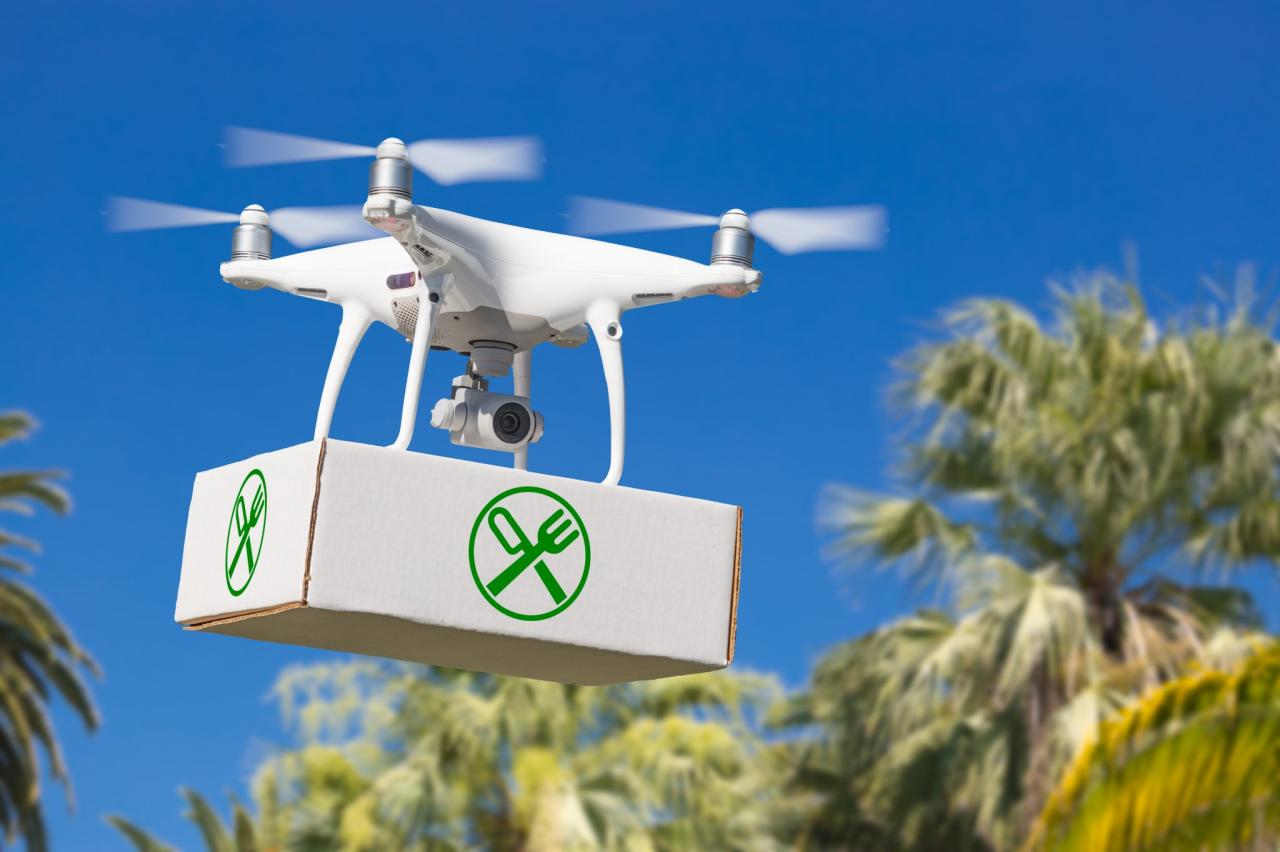Amazon drone delivery locations are rapidly expanding, marking a significant shift in how we receive packages. This exploration delves into the current status of Amazon’s drone delivery program, examining the factors influencing location selection, future expansion plans, customer experiences, and the broader economic and social impacts. We’ll uncover the technological advancements, regulatory hurdles, and logistical challenges that shape this innovative delivery system.
From understanding the types of packages currently eligible for drone delivery to analyzing the impact of weather and population density on location choices, we’ll paint a comprehensive picture. We’ll also look ahead, exploring potential future locations and strategies for addressing environmental concerns associated with increased drone operations. This includes examining how customer feedback shapes service improvements and the long-term sustainability of this technology.
Amazon Drone Delivery Program: Current Status and Future Outlook

Amazon’s drone delivery program, Prime Air, represents a significant step towards faster and more efficient package delivery. While still in its relatively early stages, the program has demonstrated the potential to revolutionize last-mile delivery. This article provides an overview of the current state of Prime Air, factors influencing location selection, future expansion plans, customer experience, and the broader economic and social impacts.
Current Amazon Drone Delivery Program Status

Amazon’s drone delivery service is currently operational in a limited number of locations. The program focuses on delivering smaller packages to customers within a defined radius of designated drone hubs.
- Geographic Scope: Prime Air’s operational area is geographically restricted, primarily serving select communities in the United States. The exact locations are not publicly disclosed in detail for operational security reasons, but they generally involve suburban and rural areas with relatively flat terrain and minimal airspace congestion.
- Eligible Packages: Currently, only smaller packages weighing under a certain limit (which is also not publicly disclosed for competitive reasons) are eligible for drone delivery. These typically include items like books, small electronics, and everyday household goods. Larger or heavier items remain outside the scope of current drone delivery capabilities.
- Technological Infrastructure: The infrastructure supporting Amazon’s drone delivery program includes a network of drone hubs strategically located to cover the service area. These hubs house charging stations, maintenance facilities, and control systems for the drones. A robust communication network is essential for real-time drone tracking, control, and communication between the drones and the central control system. This network utilizes various technologies to ensure reliable connectivity even in remote areas.
- Speed and Efficiency: Drone delivery offers significantly faster delivery times compared to traditional ground-based methods, especially for shorter distances. The elimination of ground traffic congestion and the ability to fly directly to the delivery location contribute to this speed advantage. However, efficiency is also dependent on weather conditions and operational constraints.
Factors Influencing Drone Delivery Location Selection
Expanding drone delivery locations requires careful consideration of several logistical, regulatory, and environmental factors. The selection process is complex and involves detailed analysis of these key aspects.
- Logistical Challenges: Logistical challenges include establishing and maintaining drone hubs, ensuring reliable communication networks in diverse geographic locations, and managing the logistics of package handling and drone maintenance.
- Regulatory Hurdles: Each region has its own set of regulations governing drone operations, including airspace restrictions, safety protocols, and licensing requirements. Navigating these regulations and obtaining necessary approvals is crucial for successful expansion.
- Population Density and Infrastructure: Optimal locations generally feature a balance of population density to justify the investment in infrastructure, alongside sufficient infrastructure to support drone operations. Areas with established communication networks and suitable landing zones are preferred.
- Weather Conditions: Adverse weather conditions such as strong winds, heavy rain, or snow can significantly impact drone operations. Locations with favorable weather patterns are crucial for ensuring reliable delivery services.
Future Expansion Plans and Potential Locations
Amazon’s future expansion plans likely involve a phased approach, focusing on areas with favorable conditions and gradually expanding the service area. The following hypothetical expansion plan illustrates a possible timeline and target locations.
| Location | Projected Launch Date | Estimated Delivery Radius (miles) | Expected Customer Base |
|---|---|---|---|
| College Station, TX | Q4 2024 | 5 | 50,000 |
| Boise, ID | Q2 2025 | 7 | 75,000 |
| Raleigh, NC | Q4 2025 | 6 | 60,000 |
| Tucson, AZ | Q1 2026 | 8 | 80,000 |
Three potential future locations are described below. These locations represent diverse geographical settings and illustrate the range of factors considered in site selection.
- College Station, TX: This location offers a relatively flat terrain, a substantial population density, and a well-established infrastructure, making it suitable for drone operations. The presence of Texas A&M University could also provide opportunities for research and development collaborations.
- Boise, ID: Boise provides a balance between population density and access to less congested airspace, minimizing potential conflicts with other air traffic. The city’s relatively favorable weather conditions also contribute to the feasibility of year-round drone operations.
- Raleigh, NC: The Research Triangle area in North Carolina offers a strong technological infrastructure and a large potential customer base. The region’s relatively flat topography also supports drone operations.
Addressing environmental concerns related to increased drone operations will require strategies such as utilizing electric or alternative fuel drones, optimizing flight paths to minimize noise and energy consumption, and developing responsible drone recycling programs.
So you’re curious about where Amazon’s drone deliveries are headed? It’s a pretty limited area right now, focusing on specific suburban zones. But think about the scale – imagine the tech needed, and how that relates to a much larger spectacle, like the amazing light show put on by drones at Niagara Falls; check out the details here: niagara falls drone show.
That kind of coordinated flight control is what makes widespread drone delivery a future possibility, even if we’re not quite there yet.
Customer Experience and Feedback, Amazon drone delivery locations
Amazon can leverage customer feedback to continuously improve its drone delivery service. This feedback is crucial for enhancing speed, reliability, and ease of use.
A hypothetical customer survey might include questions on:
- Overall satisfaction with the drone delivery experience.
- Speed of delivery compared to traditional methods.
- Reliability of the service (on-time delivery, successful delivery attempts).
- Ease of use of the app and communication system.
- Suggestions for improvements.
Potential improvements to the customer interface might include real-time tracking updates, proactive communication about delivery delays, and simplified order management tools. Amazon can use data from drone deliveries to optimize delivery routes, predict demand, and improve resource allocation.
Economic and Social Impacts of Drone Delivery
Widespread adoption of drone delivery has significant potential economic and social impacts. These impacts need to be carefully considered.
- Economic Benefits: Drone delivery can reduce delivery costs for Amazon, potentially leading to lower prices for consumers. It can also create new job opportunities in drone maintenance, operation, and related fields. Communities served by drone delivery might experience increased economic activity.
- Job Creation and Displacement: While drone delivery may displace some traditional delivery jobs, it is likely to create new job opportunities in related sectors. Retraining and upskilling programs will be important to manage the transition.
- Social Impacts: Positive social impacts might include increased access to goods and services in remote or underserved areas. Negative impacts could include concerns about noise pollution, privacy issues, and potential safety hazards if not properly managed.
- Sustainability: The long-term sustainability of drone delivery depends on addressing environmental concerns related to energy consumption, battery disposal, and potential air pollution. The use of sustainable fuels and materials is crucial for the environmental responsibility of the technology.
Final Summary: Amazon Drone Delivery Locations

Amazon’s drone delivery program represents a bold step towards a faster, more efficient future of logistics. While challenges remain in terms of regulatory hurdles, infrastructure requirements, and environmental impact, the potential benefits – from economic growth to enhanced customer convenience – are undeniable. Continued innovation and careful consideration of societal impacts will be crucial in shaping the success of this revolutionary delivery method and its widespread adoption.
General Inquiries
How long does Amazon drone delivery take?
Delivery times vary depending on distance and weather conditions, but are generally much faster than traditional delivery methods.
So you’re curious about where Amazon’s drone deliveries are headed? They’re expanding rapidly, testing various locations for optimal efficiency. To understand the technology behind this, check out the impressive capabilities of sky elements drones , which offer insights into the kind of advanced features needed for large-scale drone delivery operations. This tech plays a key role in determining which areas are suitable for Amazon’s ambitious drone delivery plans.
What if my package is too large for drone delivery?
Currently, only smaller packages are eligible for drone delivery. Larger items will still be delivered via traditional methods.
Is drone delivery available everywhere?
Amazon’s expanding drone delivery network is pretty cool, right? They’re testing out new locations all the time, and it’s exciting to see the technology progress. If you’re interested in seeing some amazing drone technology in action, check out the spectacular visuals at the florida drone show ; it’s a great example of what’s possible with drones. After seeing that show, you’ll have a whole new appreciation for the potential of Amazon’s drone delivery locations and the future of delivery services.
No, Amazon drone delivery is currently limited to specific locations and is expanding gradually.
What happens if there’s bad weather?
Drone deliveries are suspended during inclement weather conditions to ensure safety.
How much does drone delivery cost?
The cost is generally the same as standard Amazon delivery, though this may change in the future.
